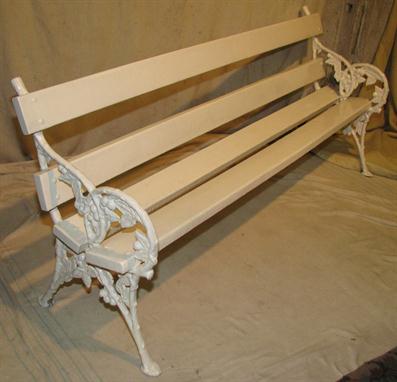We found 59213 price guide item(s) matching your search
There are 59213 lots that match your search criteria. Subscribe now to get instant access to the full price guide service.
Click here to subscribe- List
- Grid
-
59213 item(s)/page
HRH Diana, Princess of Wales - signed 1991 Christmas card with twin gilt embossed Royal crests to cover, colour photograph of Charles, Diana and their children seated on a bench inscribed - Danny with love from Diana - with envelope Further images and condition reports are available at www.reemandansie.com
A STAFFORDSHIRE TABLE-BASED GROUP of a brawling tipsy couple, he heaving fallen and up-ended a yellow table staged before their yellow armchairs and two hexagonal yellow turret spill holders flanked by bocage, on flat green base, the title ALE. BENCH in moulded navette frame to the apron, on ridged feet, 20.5cm h, c1830 ++Another good example undoubtedly by the same maker as the preceding lot and really forming a pair to it. In basically the same good condition with the following damage noted: loss to right hand tree, glued break at the elbow of man`s left arm, old repair to man`s left leg but in otherwise good condition and free from recent or professional restoration
A French Gothic pattern cast iron garden seat, circa 1880 The back formed as quatrefoils within foliate tracery 90 x 127 x 48cm (35.10 x 49.53 x 18.72in) The design for this bench is illustrated in the 1858 Barbezat & Cie Fonderies du Val d`Osne Catalogue, under `Bancs de Jardin`, pl. 251. (see J. Davis, Antique Garden Ornament, Antique Collector`s Club, Woodbridge, 1991, p. 280. pl.6:31 and 6:32 and G. Himmelheber, Cast-Iron Furniture: and All Other Forms of Iron Furniture, Munich, 1996, pl. 83).
Industrial Revolution – John Rastrick remarkable autograph letter signed by Rastrick dated Morpeth March 4th 1822 in which he claims that he invented the thrashing machine – the single most important technological breakthrough in the mechanisation of agriculture in the industrial revolution. Furthermore he claims that his invention was stolen by ‘so base a Scotchman’ who then went on to patent the idea. If this claim is true then it must re-write the history of agriculture. Although he does not mention him by name the ‘base Scotchman’ referred to is clearly Andrew Meikle a Scottish mechanical engineer who is credited with the invention around 1784. In the present letter Rastrick – father of the great railway engineer John Urpeth Rastrick – states unequivocally that he invented the machine ‘...and according to me calculation which is allowd of by the Board of Agriculture to bring into the landholders & farmers three million of money annuly but was so base a Scotchman employd by me took out a patent for these machines and got a strong party to support him prosecuited several for making and using them I took the action in hand protected all this Kingdom in a suite in law in the Court of Kings Bench the Scotch party kept the dispute in hand in and out of law for upwards of two years during that time Sir John Sinclair made me such offers to give up defending the Country...’ The letter was written to members of the Grand Jury of Northumberland as part of a campaign Rastrick was waging in order to prevent the building of Morpeth Gaol (see following lot). 3pp 4to with integral address leaf fine condition. Rastrick (1738-1826) who described himself as a ‘civil engineer’ was active in the North East of England which at that time was alive with engineering pioneers. His main area of activity was in agricultural development and he invented and patented something called the ‘Imperial Barrel Churn’. Up to now his involvement in the invention of the threshing machine has only been hinted at with Meikle receiving full credit for the development. Clearly this letter calls for further investigation of the matter.
36th (Herefordshire) Regiment Victorian Officer’s waist belt plate circa 1855-81. A good silver and gilt example with matching bench marks to both halves. Circlet inscribed ‘Herefordshire Regiment’; seeded gilt centre mounted with silver crown over ‘36’. Universal pattern rococo ends. A little service wear, generally GC. See ‘Badges of the Worcestershire Regiment ‘ by R.W. Bennett, 812.
-
59213 item(s)/page

















































